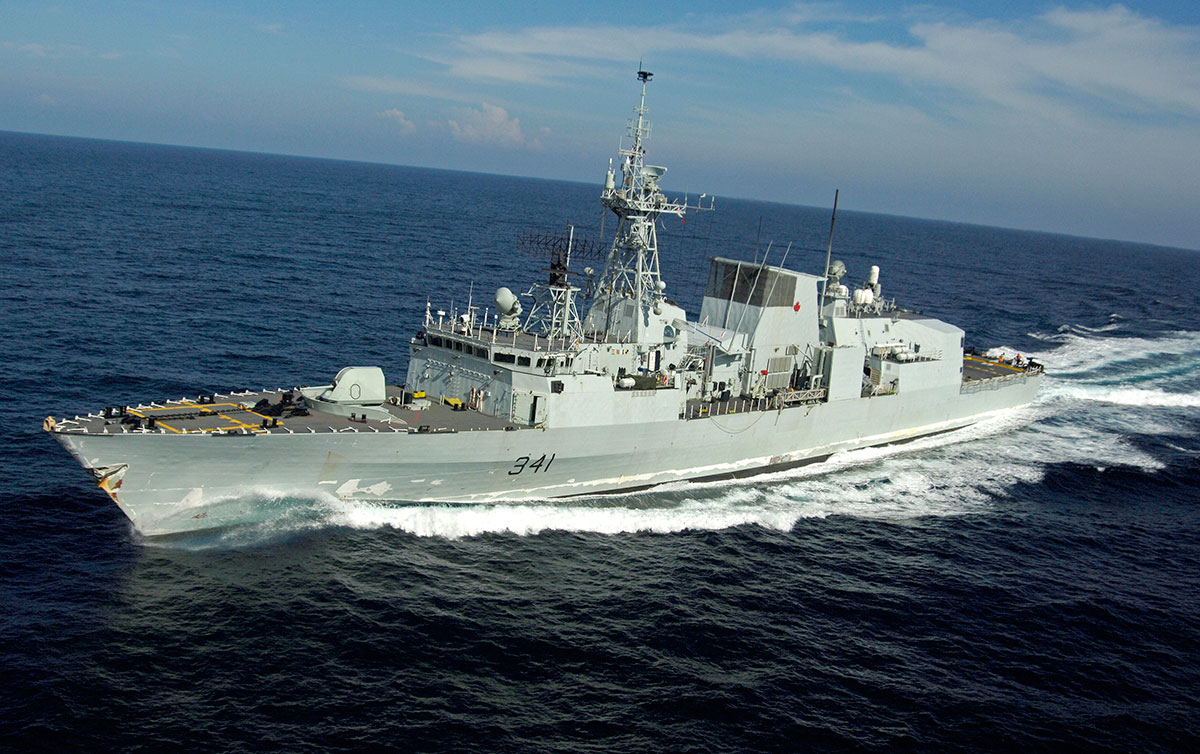The Canadian frigate HMCS Ottawa had a tense encounter with a Chinese-guided missile destroyer during a joint patrol mission with US and Japanese warships in the East China Sea.
According to media reports, on September 6, the Canadian frigate HMCS Ottawa and other vessels in its convoy were under close surveillance by the Luyang, a heavily armed Chinese destroyer.
The Chinese warship made repeated contact with the allied ships. It approached the HMCS Ottawa at a proximity, within approximately a kilometer (over half a mile), prompting the Canadian commander to launch intelligence-gathering measures concerning the Luyang.
The Canadian Broadcasting Corporation (CBC) has published footage showing a Chinese warship closely trailing a group of US, Canadian, and Japanese warships.
In the footage, one can also observe that as the participating nations line up their vessels for a group photograph, the Chinese warship remains visibly present on the periphery, maintaining a parallel course.
#BREAKING – Chinese destroyers confront Canadian warship in waters off Taiwan
The Canadian frigate HMCS Ottawa on a joint patrol mission with U.S. and Japanese warships in the East China Sea had a tense moment with a Chinese guided missile destroyer. A CBC News crew, with… pic.twitter.com/Iq4ZMOq7qf
— Jack Straw (@JackStr42679640) September 8, 2023
Canadian Navy Commander Samuel Patchell expressed that the Chinese showed a keen interest in understanding the activities of the HMCS Ottawa and its allied vessels.
“They’re as curious about our behavior as we are of theirs,” Patchell conveyed to an on-board reporter while observing the Luyang from the command bridge of the Canadian vessel.
According to the report, in less than a week since departing from the port of Yokosuka, Japan, the Canadian warship HMCS Ottawa has encountered Chinese vessels on at least three separate occasions.
Before the tense encounter with the Chinese destroyer, a small Chinese vessel directed laser lights toward the HMCS Ottawa on September 5, resulting in one sailor being hit by the beam. The sailor remained unharmed.

Furthermore, the Chinese vessel also deployed a drone, but it maintained a significant distance from the Canadian ship, which is equipped with the capability to intercept and neutralize hostile drones.
Nonetheless, HMCS Ottawa is one of the two Canadian frigates embarking on a four-month deployment, accompanied by MV Asterix, a supply vessel responsible for refueling the frigates and other allied nations at sea, extending their operational capabilities.
Dangerous Encounters Between Western Powers And Chinese Military
These recent incidents occurred when China’s navy, which has now become the world’s largest in terms of the number of ships, displays growing assertiveness in the region.
This assertiveness includes occasional harassment of military vessels passing through the Taiwan Strait or the South China Sea. China claims ownership over portions of both areas.
In a significant incident in June, a Chinese navy vessel maneuvered to overtake a US Navy ship and then executed a sharp turn, compelling the American warship to undertake evasive maneuvers in the contested waters of the Taiwan Strait.
Beijing is leveraging its expanding military capabilities and economic influence to challenge Asia’s longstanding US military dominance. China perceives the United States as an outsider meddling in a region that regards itself as a promoter of peace and stability.
A significant source of contention lies in the “freedom of navigation” patrols, during which the United States and its allies navigate naval vessels through the Taiwan Strait and the South China Sea. The United States contends that these patrols uphold the right of all nations to traverse international waters.
China has objected to US vessels and aircraft in the Taiwan Strait and the South China Sea, particularly near islands it claims, controls, or has transformed into military installations.
During these encounters, the People’s Liberation Army Navy (PLAN) typically monitors US vessels.
Several experts suggest that Chinese military commanders have been encouraged to adopt a more assertive stance when dealing with foreign warships and aircraft, contributing to heightened regional tensions.
Recent events in the South China Sea have included a Chinese coast guard ship aiming a “military-grade laser” at a Philippine vessel in February.
On September 8, the Philippines again strongly criticized what it deemed as “illegal” actions by Chinese vessels. These Chinese boats were accused of interfering with a resupply mission to a remote military outpost in the contested South China Sea.
Such incidents underscore the ongoing tensions and disputes in this strategically significant maritime region.
- Contact the author at ashishmichel(at)gmail.com
- Follow EurAsian Times on Google News